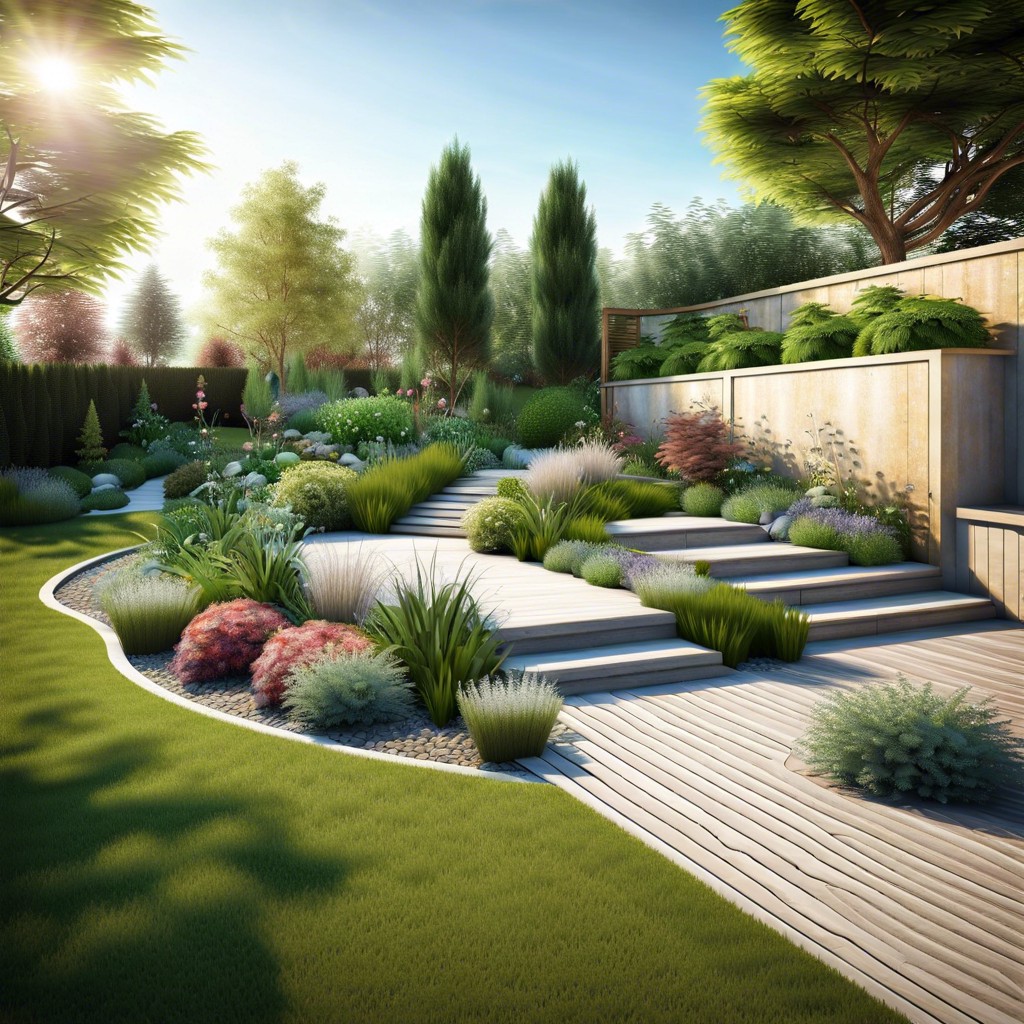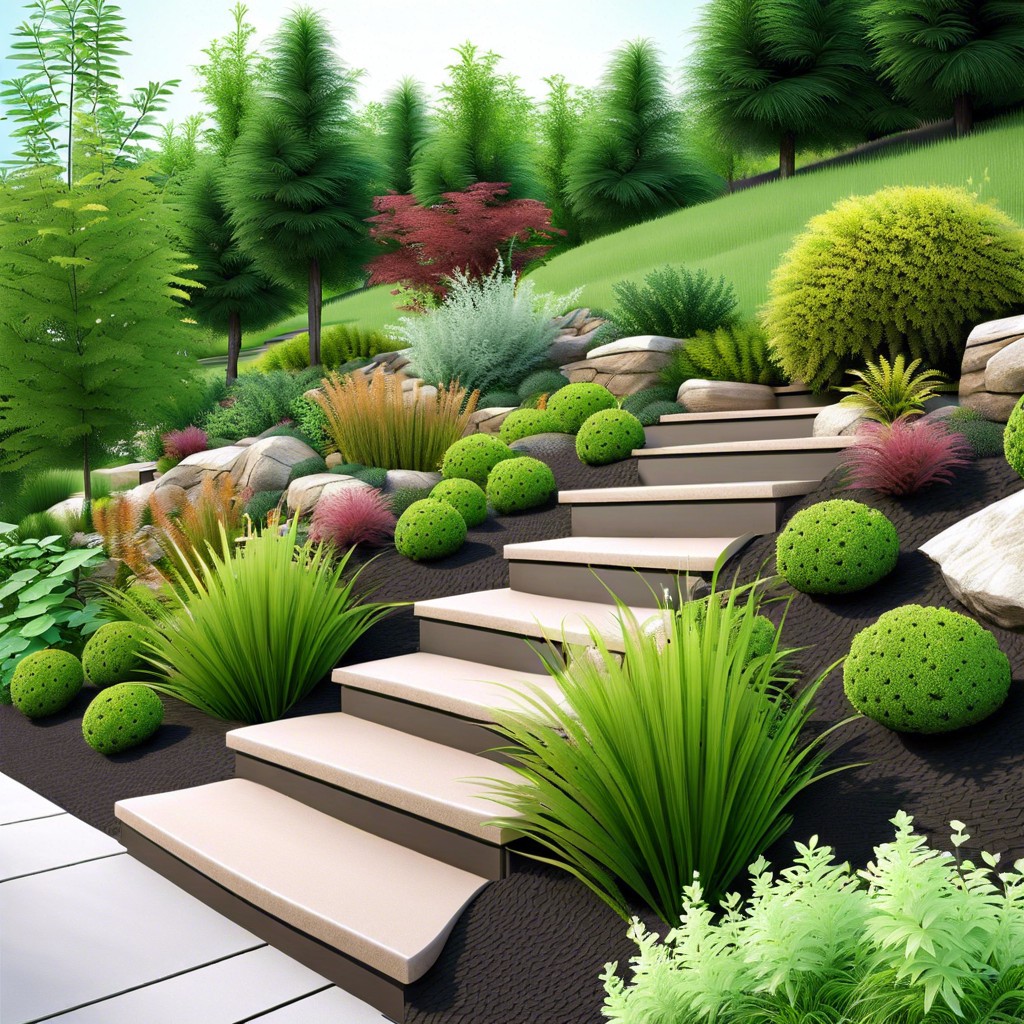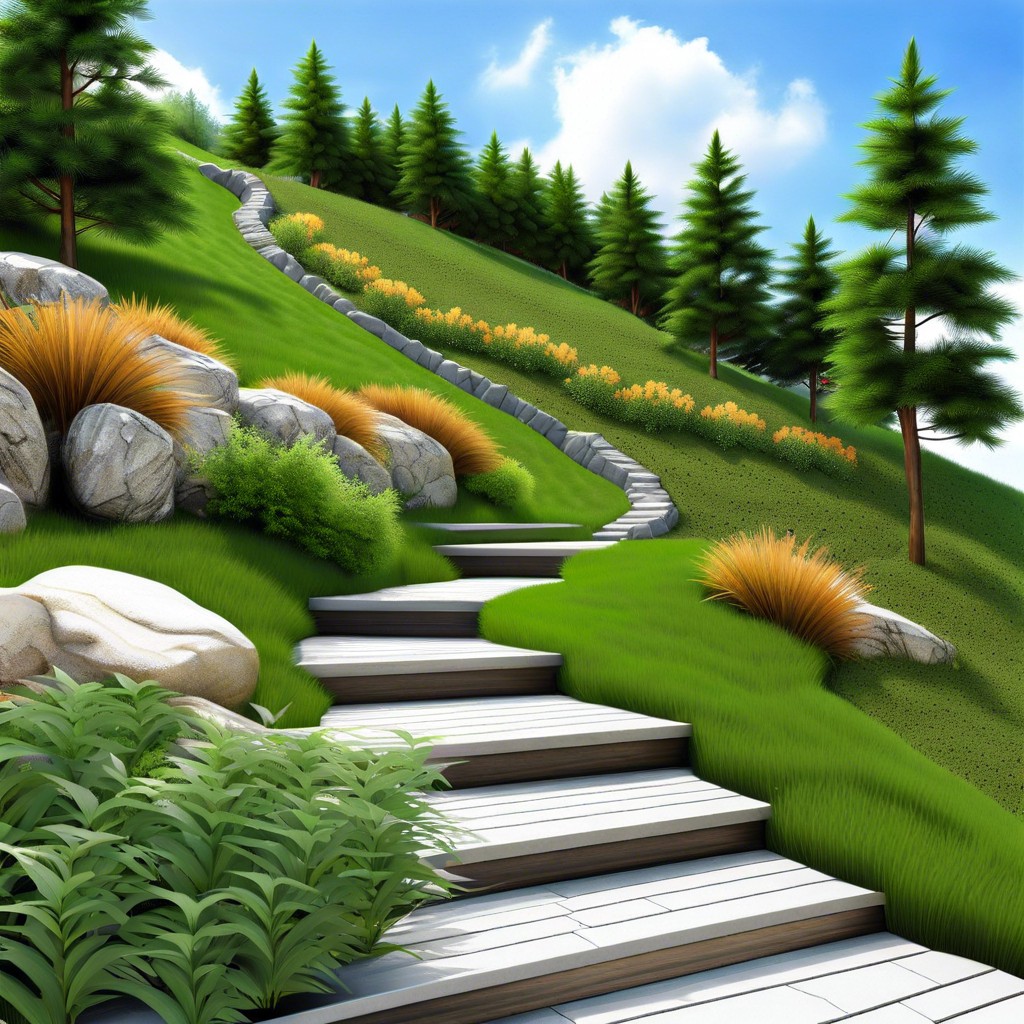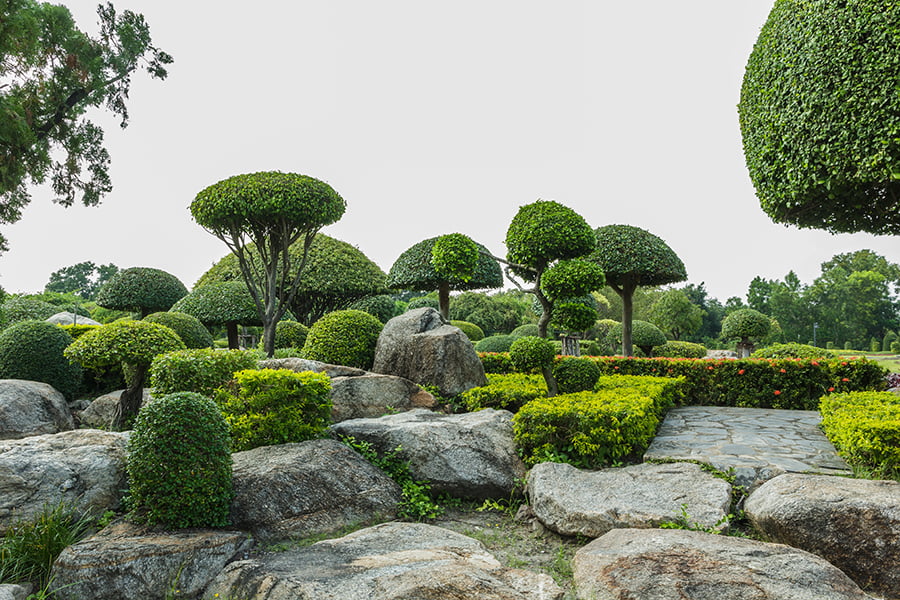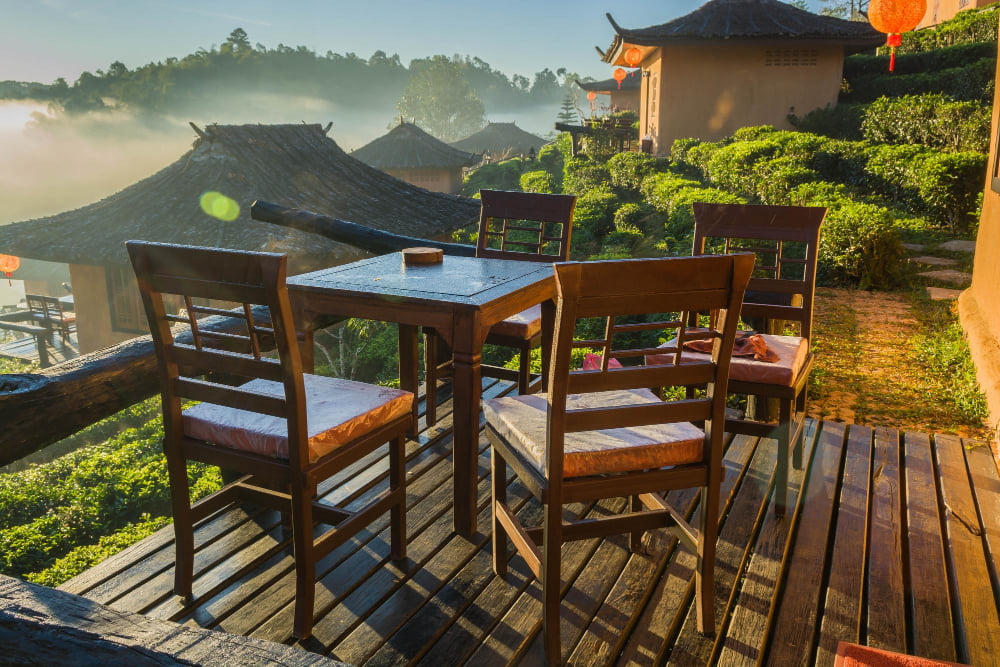Learn practical tips for creating a low maintenance landscape on steep slopes, perfect for homeowners who want beauty without the backbreaking work.
Key takeaways:
- Consider slope angle, sun exposure, and soil type for plant selection.
- Ensure proper drainage to prevent erosion and waterlogged soil.
- Analyze soil composition and pH to match plants’ needs.
- Create a strategic plan, considering plant species and garden theme.
- Evaluate sun and shade patterns to optimize plant placement.
PRELIMINARY CONSIDERATIONS

Before you dive into planting on your steep slope, it’s key to look before you leap! First off, give your slope the once-over—what’s its angle and how generous is the sun’s attention? You wouldn’t sunbathe at the bottom of a well, and neither would sun-loving plants!
Moving on, get chummy with your soil – is it a sandy socialite or a clingy clay type? That’ll tell you who’ll thrive there without much fuss. Think of it as matchmaking for your plants.
Last but never least, think water. You wouldn’t want a mini Niagara Falls every time it rains, right? So, give a thought to where the water goes when clouds have an outpour. Smart drainage is your insurance against the washing away of your green dreams. Remember, a stitch in time saves nine, and a little prep goes a long way on a slope!
Evaluate Your Slope
Before diving into the exciting transformation of your steep garden area, let’s wrap our heads around what we’re working with. Imagine you’re a pirate, but instead of searching for treasure, you’re surveying your land for its secrets: the slope’s angle, the direction it faces, and how the sun kisses it during the day.
Ask yourself – Is your slope gentle or as steep as a rollercoaster? This isn’t just trivia; it’s crucial to figuring out if you’ll be enjoying an easy stroll up your garden or taking on a mini climbing expedition. The steeper it is, the more you’ll need to consider safety, accessibility, and erosion control in your plans.
Now, play detective with the sun. Does your slope bask in full sunlight, or is it a shady retreat? This intel will be your guide in selecting plants that will flourish without demanding constant TLC from your side. Sun-loving plants on a shady slope will sulk, and shade-lovers in full sun might throw a fit.
Lastly, befriend the wind. Steep slopes can be windy spots, and not all plants are fond of a breezy lifestyle. An understanding of these factors will be your compass for creating a sustainable, easy-going landscape. So, let’s keep our eyes peeled, our wits sharp, and our gardens thriving with less fuss.
Analyze the Soil
Just like a detective zeroes in on evidence, scrutinizing your slope’s soil is a pivotal step. Kick things off with a simple “squeeze test”. Take a handful of damp earth and give it a good press. If it holds shape like a pro cake decorator’s fondant, you’ve likely got clay which is brilliant at staying put but can hog water like a camel. On the flip side, if it falls apart faster than a house of cards, you’re dealing with sandy soil that drains quicker than a bath with no plug.
Don’t skip the “percolation test” for a reality check on drainage. Dig a hole, fill it with water, and time how long it takes to wave goodbye. More than a few hours? You’ve got a puddle party, and plants that love drier feet might RSVP “No”.
Lastly, say howdy to your local extension office or grab a soil test kit. Trust me, it’s simpler than assembling furniture with a cryptic manual. It’ll tell tales of your soil’s pH and nutrient levels. Think of it as the soil’s personal ad; you want to ensure the match with your plants is more love story and less horror flick.
Consider Drainage
Before diving into the aesthetics, let’s talk about something that’s pivotal yet often overlooked: managing water flow. Neglecting this could turn your green paradise into a mudslide fiasco come a heavy rain.
Think about it, water on a slope can be a slippery character, running down faster than ice cream on a sunny day. You’ll want to slow down its pace to avoid erosion, which can sweep away your hard work. Terracing is one handy trick—it’s like giving water a stairway to tiptoe down instead of a slide. Add some deep-rooted plants that act like Mother Nature’s anchors, and you’ve got yourself a solid line of defense.
Remember, your slope should have a Goldilocks drainage scenario—not too much, not too little. Waterlogged soil might as well be quicksand for plants. They hate soggy feet! On the flip side, soil that’s drier than a stand-up comedian won’t do your plants any favors either.
So, consider a rain garden, a charming feature that’s both practical and pretty. It’ll handle excess water like a champ, all while giving pollinators a pit-stop. Alternatively, cleverly placed rocks can redirect water, ensuring your slope won’t turn into the neighborhood water slide.
In essence, keep your slope happy by giving water a thoughtful path to follow. With the right moves, you’ll keep your soil in place, plants thriving, and your weekends free from unwanted gardening dramas!
MAKE A PLAN
Crafting your strategy is like setting the stage for a play; every element must be in its perfect spot for the show to go on smoothly. Start with a sketch, roughly drawing where you envision different plants and structures. Imagine the flow of your garden as you would choreograph a dance, with graceful transitions from one plant group to another.
When choosing a theme, think of it as picking a genre for a novel. Will it be a wild, native landscape, or a refined, ornamental haven? Stick with this theme to create a cohesive visual experience. Next, consider the stars of your show: the plants. Go for resilient varieties that won’t need constant pampering. Think of indigenous species that are accustomed to the local climate and terrain; they’ll take to your slope like a duck to water.
Lastly, the success of your plan hinges on practicality. Evaluate which areas get sun and shade throughout the day, and match plants to these conditions like pairing wine with a fine meal. This foresight prevents a square-peg-round-hole situation, saving you from a gardening misstep. With your plan set, you’re one giant leap closer to a low maintenance, hillside paradise.
